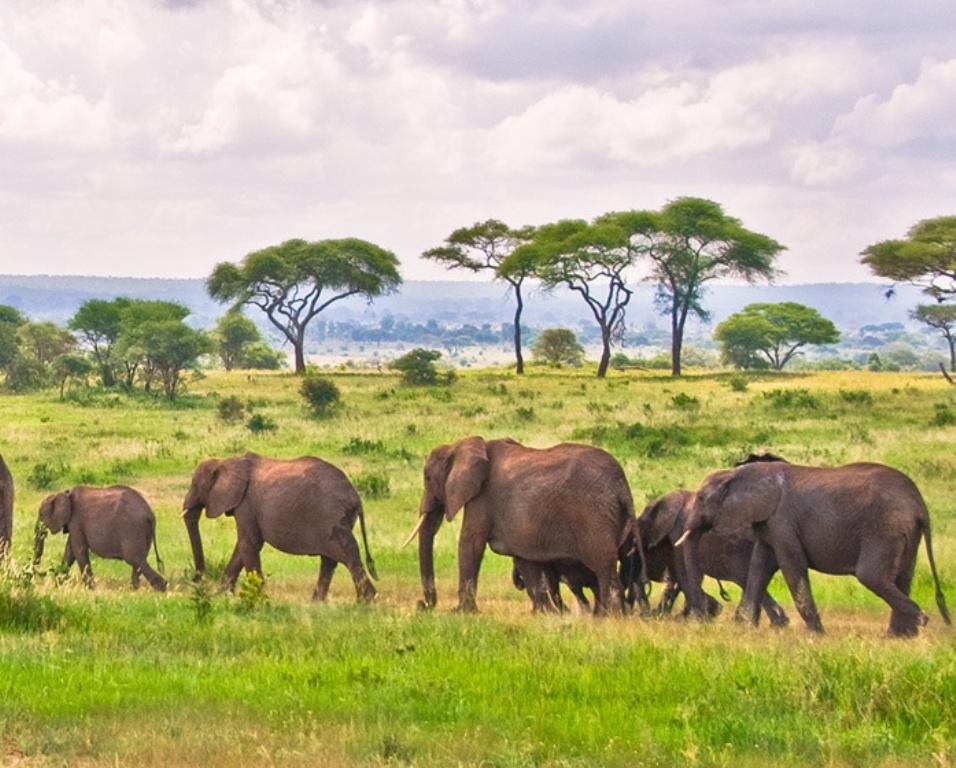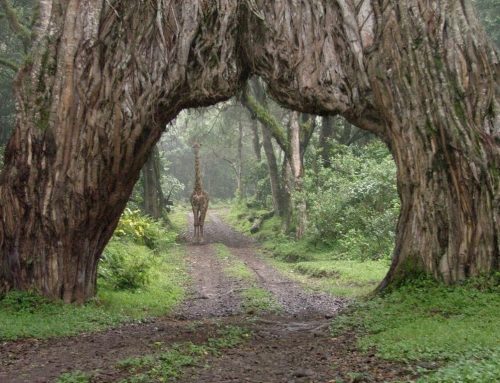Size: 2,600 sq km (1,005 sq miles).
Location: 118 km (75 miles) southwest of Arusha.
Named after the Tarangire River, Tarangire is the quintessential African park…The rolling savannah, dotted with splendid baobab and acacia trees provide a beautiful backdrop for herds of wildebeest, buffalo, elephant, impala and zebra…Also found within its boundaries are lion, leopard, warthog, eland, ostriches, gazelles, giraffe, hartebeest, tree climbing pythons and abundant birdlife…Some herbivore that are rarely seen in Northern Tanzania inhabit this park too, Oryx, Lesser kudu and in the southernmost areas, gerenuk and Greater kudu.
The park is part of a larger ecosystem that extends as far as Lake Manyara and Lake Natron and includes many game controlled areas in the surrounding Maasai Steppe…The animals migrate out of the park during the wet season, but concentrate in large numbers along the permanent Tarangire River
during the dry season, June to September, making it the best time to visit. Herds of up to 300 elephants scratch the dry river bed for underground streams, while migratory wildebeest, zebra, buffalo, impala, gazelle, hartebeest and eland crowd the shrinking lagoons. It’s the greatest concentration of wildlife outside the Serengeti ecosystem – a smorgasbord for predators – and the one place in Tanzania where dry-country antelope such as the stately fringe-eared Oryx and peculiar long-necked gerenuk are regularly observed.
The Best time to visit Tarangire National Park
The middle and the end of the dry season that runs from late June to October is the best time to view wild life in Tarangire National Park. Most of the animals move out of the park during the wet season and viewing animals is remarkably less good. In June to October, the animals gather around the Tarangire River and this is the best time to go to Tarangire Park. There is little rainfall during June to October hence making it the time with the best weather. June to October still marks the high season with so many tourists filling the park. While the low season comes in April to May. The peak of the wet season sets in during March and April, hence the worst weather then.
The Dry season: June to October
From the surrounding areas, the animals migrate into the park during this time. The vegetation thins out and the animals gather around water points like rivers and water holes thus making wildlife easier to view. The weather is very beautiful and sunny around this time. The mosquitoes are less hence the risk of contracting malaria is also much lower. It is important to note that, there are a great number of animals at the beginning or end of the dry season and this differs greatly. If it happens and the wet season stops late, it is possible that most of the animals have not moved to the park by June. And if it happens that the short rains come early, then it could be that the animals start to leave by October. It is very essential to have warm clothes starting with June to August since the morning drives are very cold. Days are calm with clear skies and should the short rains start early, then they begin in October. At night, the temperatures drop and it cools down.
The wet Season: November to May
This season goes on from the month of November till May each year. During this time, the vegetation is stunning and adequate. The rates and prices may be much lower since this is the low
season. The wet season is also prime time for bird watching since the migratory birds are present then. March to May mark the peak of the wet season and it is considerably less good to view the wildlife as compared to during the dry season since most animals move out of the park. The wet season consist of long rains for March to May and short rains during November and December. The rains normally fall in the afternoons and hardly for the whole day. The temperatures do not change much over the year and it does not usually get too hot although the evenings and mornings tend to get too cold. The Tarangire weather is temperate and enjoyable. Showers usually come about in the afternoon. After the short rains, a dry spell will occur and its beginning is difficult to predict. Tarangire is known as a classic dry reserve. When it rains, the animals move up into the Masaai steppe yet in the dry season, the animals gather around the Tarangire River






